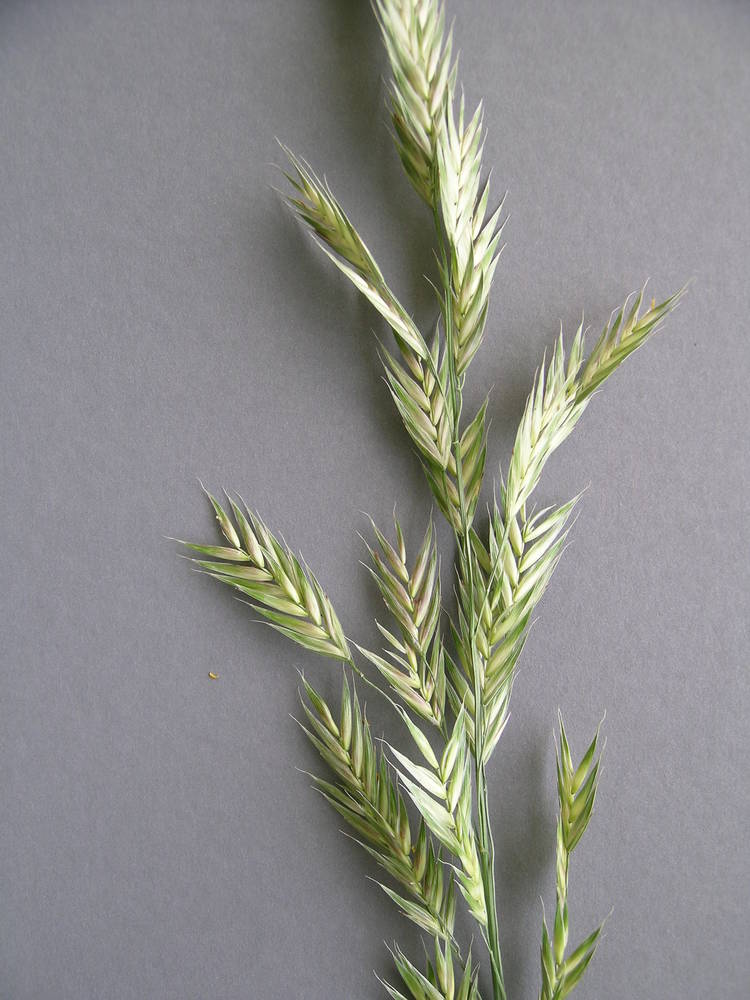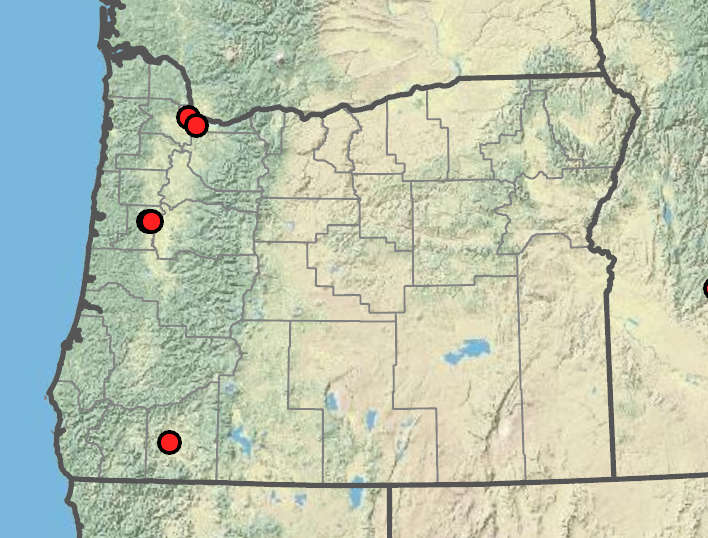Bromus catharticus
Bromus orcuttianus
rescue grass
Orcutt's brome
internodes glabrous to pubescent, pilose to densely pubescent below the nodes;
nodes 2–4, pubescent or puberulent.
sheaths sparsely to densely pilose;
basal sheaths with hairs 2–4 mm, occasionally glabrous; upper sheaths with hairs to 1 mm;
collars pilose with hairs to 4 mm or glabrous;
ligules 1–3 mm;
blades 7–24 cm × 3–12 mm; flat, glabrous, sometimes hairy.
7–13.5 × 2–12 cm;
branches erect or ascending, appressed to slightly spreading.
20–40 mm, elliptic to lanceolate; terete to moderately laterally compressed, with 3–9(11) florets.
glabrous, occasionally scabrous or pubescent;
lower glumes 5–9 mm, 1(3)-veined;
upper glumes 7–11 mm, 3(5)-veined, sometimes short-pointed.
9–16 mm, elliptic, rounded over the back; backs pubescent, sometimes glabrous or scabrous;
margins pubescent or scabrous; the hairs similar to those on the lemma backs;
tips obtuse; entire, awned;
lemma awns (4)5– 8 mm; straight.
3–5 mm.
=14.
Bromus catharticus
Bromus orcuttianus
[Species with one variety or subspecies in Oregon.]
Dry montane conifer forests, especially ponderosa pine; chaparral, openings, sometimes in moister sites. 700–2200m. BW, Casc, ECas, Lava, Sisk. CA, WA; southeast to AZ. Native.
Bromus orcuttianus is a grass of open, upland forests. The inflorescence of B. orcuttianus is upright and open with stiff, spreading branches. Bromus suksdorfii has a denser inflorescence, and B. laevipes has more flexuous branches and 5-veined upper glumes. Bromus orcuttianus is an uncommon native grass that seems to have declined in numbers, probably due to grazing.
Barbara Wilson, Richard Brainerd, Nick Otting
- Local floras:
CA,
OR,
WA
- Local Web sites:
CalFlora,
CalPhotos,
Flora NW,
PNW Herbaria
WildflowerSearch
iNaturalist (observations)
USDA Plants Database
- LBJ Wildflower Center
- SEINet
- Plants of the World Online
- Encyclopedia of Life
- Wikipedia
- Google Image Search




